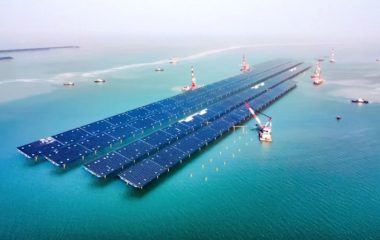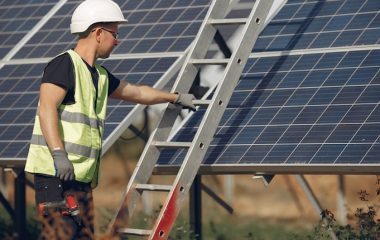
Photo: mrganso from Pixabay
The long-awaited regulatory framework for renewables licensing, energy storage and floating photovoltaics was submitted for public consultation by the Greek Ministry of Environment and Energy.
According to an official announcement, the basic goals of the new framework for renewables licensing and energy storage are as follows:
– Reduce the average licensing time for renewables from five years to 14 months.
– Develop energy storage projects of at least 3.5 GW by 2030.
– Increase the power grid’s ability to include more renewables and enhance net metering.
The measures are expected to have a decisive effect on the country’s goal for 2030, which calls for renewables to reach 35% of the primary energy mix and 70% of the electricity production mix.
The framework introduces simplification, digitalization and acceleration of procedures, since all actions will be made online, while the number of documents required will be drastically reduced and prepared in parallel instead of consecutively.
In this way, Greece’s goal to have 25 GW of renewables by 2030, compared to the current 8.62 GW, will be made possible, according to the government.
A drastic drop in required licensing time for renewables
The new framework includes the following changes when it comes to licensing:
– The number of licensing stages is reduced from seven to five.
– Average time is reduced from five years to 14 months.
– The number of required documents is reduced from 91 to 54.
– The amendment of existing licenses is simplified.
In addition, there is now a specific milestone for investors in order to realize their projects in a timely and quick manner.
The competent public bodies and grid operators are now exempted from having to go through all the required documents as they will be examined by third parties, such as lawyers.
The economic credibility of investors is checked through the submission of a letter of guarantee during their application for grid space and not during its commitment, thus reducing the number of applications.
Actions and licenses that were previously connected and serial are now separate and parallel, such as connection terms and installation permits.
A one-stop service is created under the ministry that will maintain oversight of the entire licensing process. Also, a digital platform will connect all the various sub-systems and databases of all bodies in order to have better communication and immediate contact with investors.
Two kinds of energy storage projects
The goal for energy storage is set at 3.5 GW by 2030 without counting pumped storage projects.
By 2025, energy storage projects of 1.5 GW are expected, of which 800 MW to 900 MW should be in batteries and 700 MW in pumped storage plants.
The main changes introduced in energy storage under the new law are as follows:
– Improve the licensing procedure for energy storage plants.
– Introduce measures for renewables plus storage that may also absorb energy from the transmission or distribution grid.
– Measures for the compatibility of existing licenses and applications to the new framework.
Under the new framework, storage projects are separated into two categories: ones only using storage and those combining storage with renewables.
In the second category, the project may operate through supporting renewables and will not draw energy from the grid, in which case it will be awarded a producer certificate and a tariff like any other renewable project. On the other hand, there will also be projects that may draw energy from the grid, which will be awarded a special producer certificate and no tariff.
Increasing available grid space for renewables and net metering
The transmission and distribution operators will be able to introduce constraints in the injection of power to the grid, of no more than 5% of the annual production of renewable plants in each region. The percentage can be raised through a decree by the regulatory authority after a study by the operators.
Furthermore, within 45 days of the new law taking effect, distribution system operator HEDNO will calculate available capacity in all substations of its grid. In substations where available capacity is up to 10 MW, it will be made available exclusively for self-production, net metering and rooftop photovoltaics.
New margins are 30% for households, 30% for farmers, 30% for industry and 10% for independent producers.
For substations where the available margin is over 10 MW, the exceeding capacity will be directed as follows: At least 30% in total to the four categories above and at least 70% for other renewable energy projects.
Ten pilot floating PV projects to be realized
Last but not least, the new framework includes requirements for the licensing of floating photovoltaic plants.
It allows for the installation of 10 pilot floating PV plants in coastal areas with a capacity of 0.5 MW to 1 MW.
It should be noted that floating PVs have already made their appearance in the Balkans, since Albania has installed a 500 kW unit in the Banja reservoir.


















Be the first one to comment on this article.